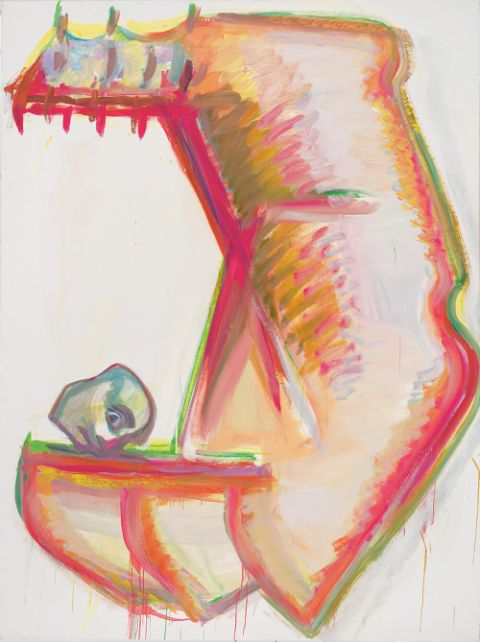Maria Lassnig

Maria Lassnig, Schafott der Eliten / Die Elite ist immer in Gefahr (Scaffold of the Elites / The Elite Is Always in Danger) (1995). Photo: Maria Lassnig Foundation, © VG Bild-Kunst, Bonn 2025, courtesy of Maria Lassnig Foundation and Capitain Petzel, Berlin
Seeking to express subjective experience, the painter Maria Lassnig observed her own body—not merely as a form, but as a site of sensation and perception, mediating between inner and outer worlds. In her paintings, pain, isolation, and fear are transformed into distorted, at times grotesque, figures. These forms express personal feeling while simultaneously alluding to the broader human condition: incomplete, ephemeral, vulnerable. Lassnig began her studies at the Academy of Fine Arts in Vienna in 1940, during the era of Austrofascism. She initially studied under Wilhelm Dachauer, who expelled her from his masterclass in 1943 due to ‘artistic differences’. Her self-portraits—in which the (female) body appears deformed, fragmented, and unfinished— stood in direct opposition to the National Socialist ideal of the perfect, gender-hierarchical Volkskörper (‘national body’). Half a century later, at nearly 80, Lassnig was still painting—unreconciled. In Schafott der Eliten / Die Elite ist immer in Gefahr (Scaffold of the Elites / The Elite Is Always in Danger) (1995), a hybrid form—part scaffold, part gaping mouth—opens wide, seemingly ready to devour the severed head that rests on its tongue. Deprived of a body, the head lies defenseless—much like the elites, rendered impotent when cut off from the corporeal power that upholds them. Lassnig’s art is not a demonstrative form of anti-fascism; it eschews ideological clarity. Instead, it articulates resistance as aesthetic disruption. Her work reminds us that control over art, culture, and the body has always been a central instrument of fascist violence: those who control them also control people.
WORK IN THE EXHIBITION: Schafott der Eliten / Die Elite ist immer in Gefahr (Scaffold of the Elites / The Elite Is Always in Danger) (1995), oil on canvas, 200.6 × 150.2 cm. Courtesy of Maria Lassnig Foundation and Capitain Petzel, Berlin